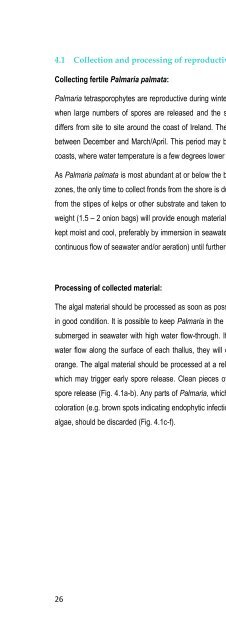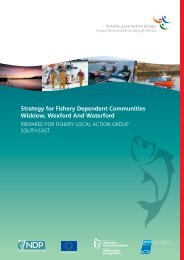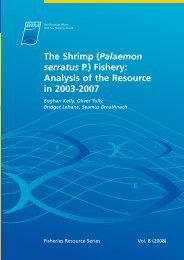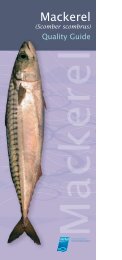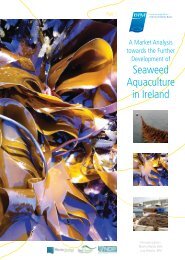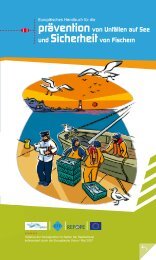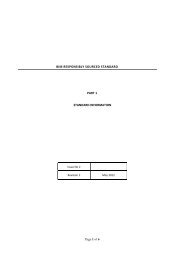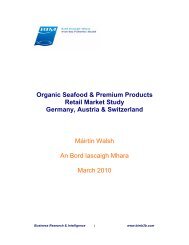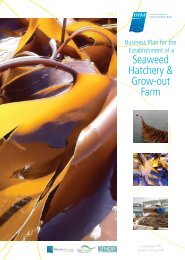Cultivating Palmaria palmata - Bord Iascaigh Mhara
Cultivating Palmaria palmata - Bord Iascaigh Mhara
Cultivating Palmaria palmata - Bord Iascaigh Mhara
You also want an ePaper? Increase the reach of your titles
YUMPU automatically turns print PDFs into web optimized ePapers that Google loves.
4.1 Collection and processing of reproductive <strong>Palmaria</strong> material<br />
Collecting fertile <strong>Palmaria</strong> <strong>palmata</strong>:<br />
<strong>Palmaria</strong> tetrasporophytes are reproductive during winter. The best time for collecting reproductive material (i.e.<br />
when large numbers of spores are released and the settling and development of spores is most successful)<br />
differs from site to site around the coast of Ireland. The main period of reproduction around Ireland‟s coasts is<br />
between December and March/April. This period may be extended in the North, especially along the Irish Sea<br />
coasts, where water temperature is a few degrees lower than in the South and Southwest.<br />
As <strong>Palmaria</strong> <strong>palmata</strong> is most abundant at or below the boundary between the lower intertidal and upper subtidal<br />
zones, the only time to collect fronds from the shore is during the low waters of spring tides. <strong>Palmaria</strong> is removed<br />
from the stipes of kelps or other substrate and taken to the hatchery for further processing. Usually 3-4 kg wet<br />
weight (1.5 – 2 onion bags) will provide enough material to seed 2-3 collectors. The collected material should be<br />
kept moist and cool, preferably by immersion in seawater at ambient temperature (e.g. in an outdoor tank with a<br />
continuous flow of seawater and/or aeration) until further processing.<br />
Processing of collected material:<br />
The algal material should be processed as soon as possible after return from the shore when the fronds are still<br />
in good condition. It is possible to keep <strong>Palmaria</strong> in the bags for up to 24 hours, provided that the bags are fully<br />
submerged in seawater with high water flow-through. If the fronds are closely packed and there is insufficient<br />
water flow along the surface of each thallus, they will die quickly and the colour will change from dark red to<br />
orange. The algal material should be processed at a relatively low room temperature (10-15°C) to avoid stress,<br />
which may trigger early spore release. Clean pieces of frond showing dark red areas of sori are selected for<br />
spore release (Fig. 4.1a-b). Any parts of <strong>Palmaria</strong>, which show attachment of other algae or animals, or unusual<br />
coloration (e.g. brown spots indicating endophytic infection), which are commonly found on the oldest parts of the<br />
algae, should be discarded (Fig. 4.1c-f).<br />
26


